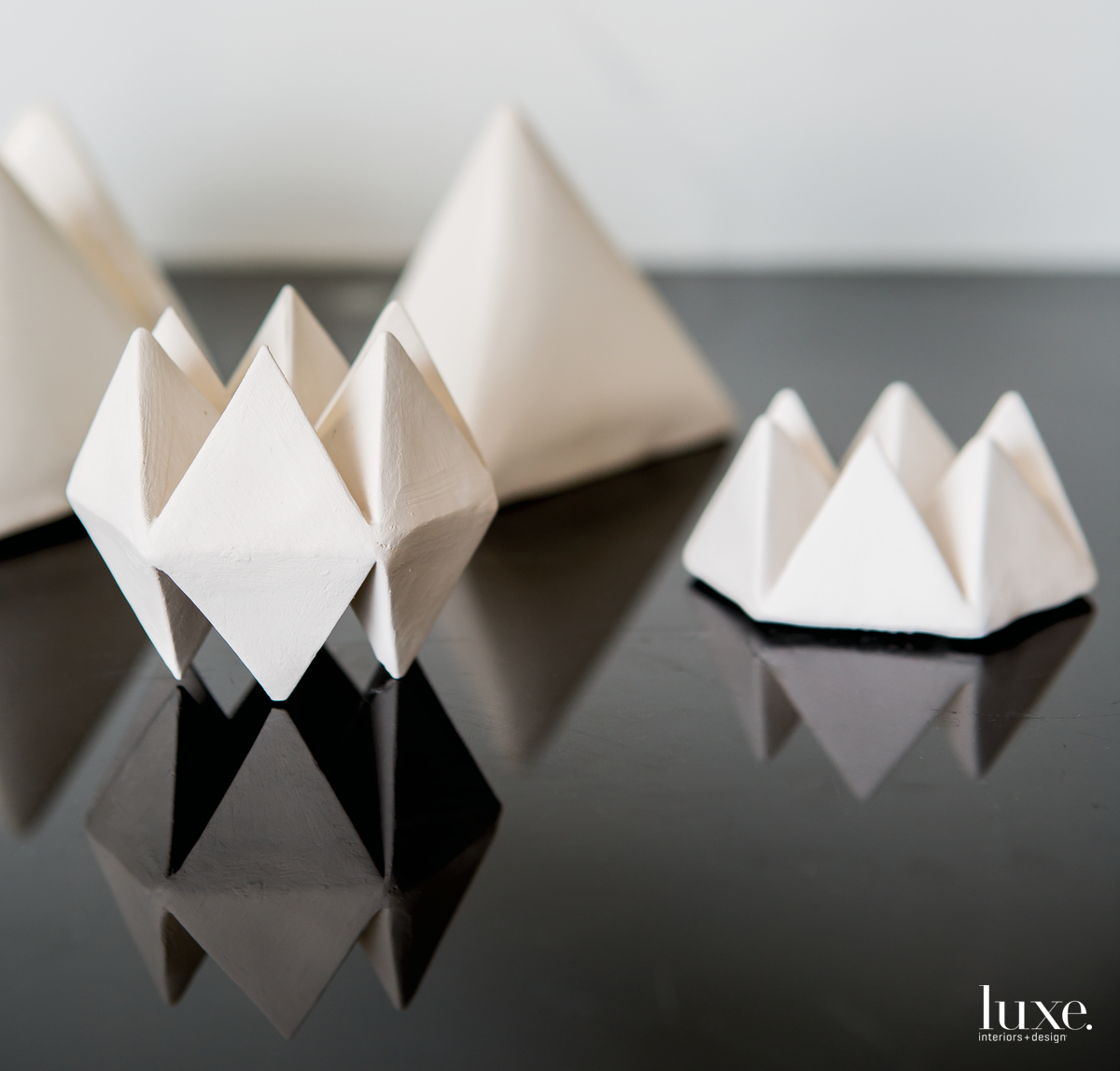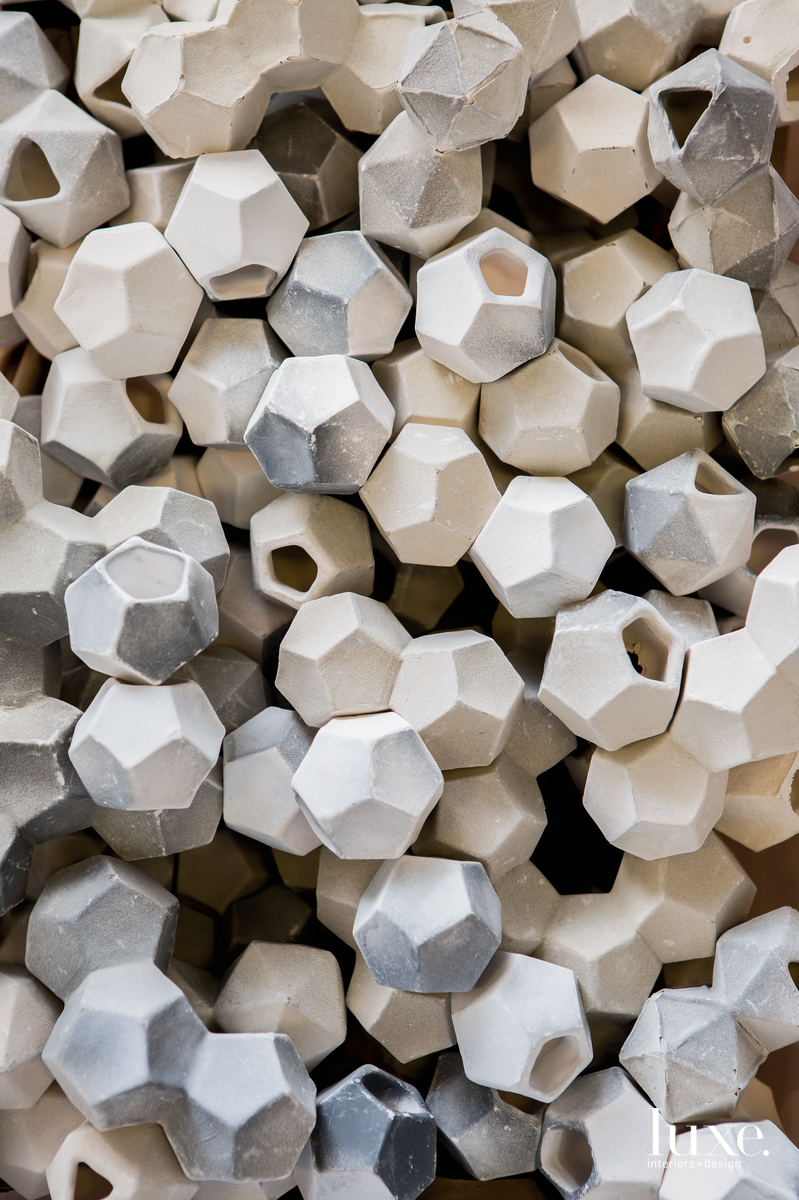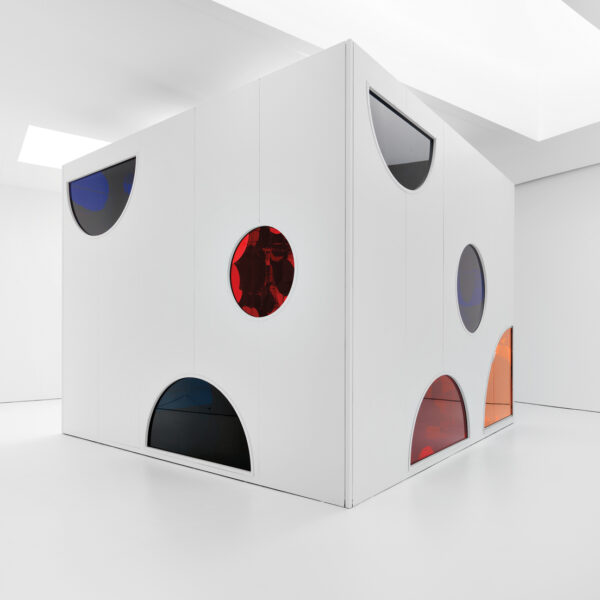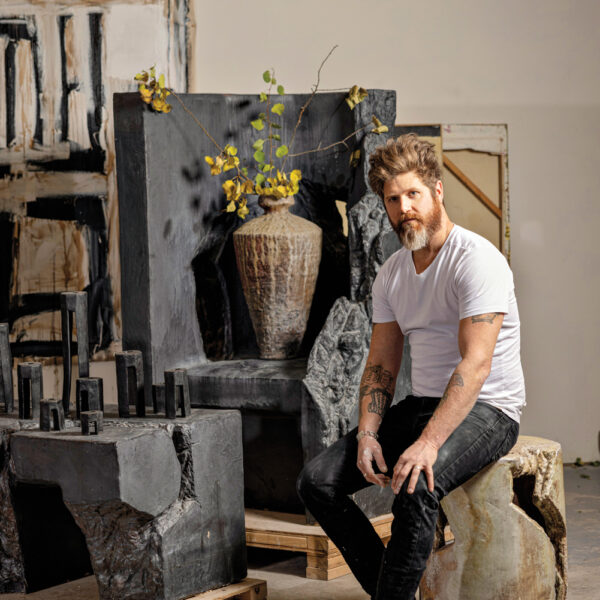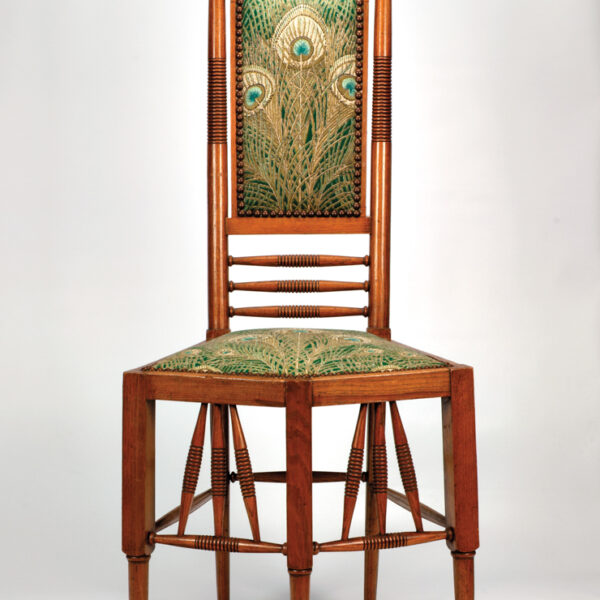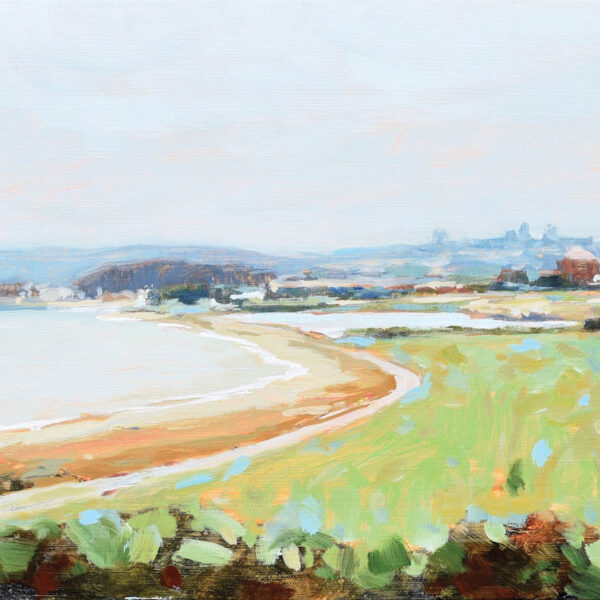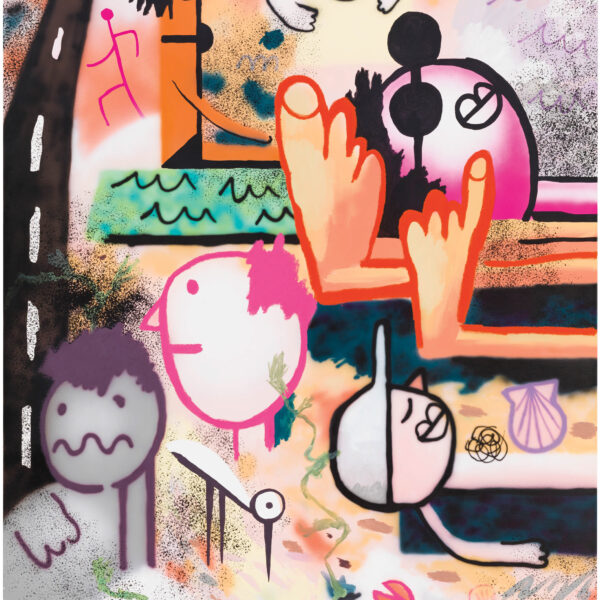For Miami ceramicist Lauren Shapiro, there was an elemental truth to the Japanese legend in which folding 1,000 origami cranes leads to a granted wish. As she embarked on her Master of Fine Arts degree at the University of Miami, the artist began folding boats as a meditative response to feeling overwhelmed. “Metaphorically they represented vessels for carrying thoughts and prayers,” she says. By the time she’d completed 1,000, she felt more centered, Shapiro recalls. “But by the end of the first semester, I only had paper forms.”
Turning paper to clay was a logical leap, and Shapiro eventually found herself studying slip casting during a fellowship in China. In Jingdezhen, where porcelain has been made almost as long as paper has been in use, Shapiro learned to craft molds from origami she’d made in icosahedron form, “a shape that occurs in nature,” she notes.
It was there Shapiro also refined her slip-casting method, which involves pouring liquid porcelain into molds and waiting for the clay to set–a process as ceremonial and precise, in its own way, as paper folding. “I like the ritual aspect,” Shapiro says. “You can make thousands of pieces with one mold.” In nature, as in art, she’s “fascinated by living design–relentless repetitive actions to form an object.”
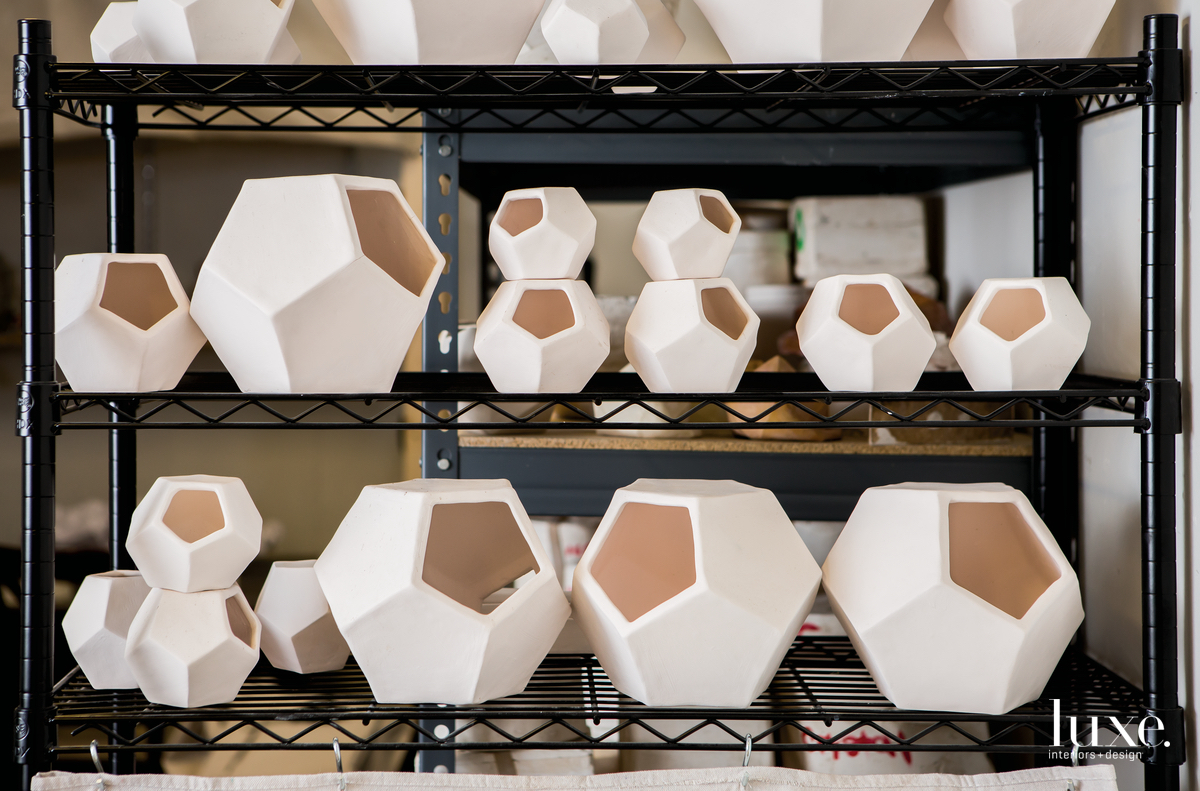
Slip-cast dodecahedrons in the studio of Miami-based ceramicist Lauren Shapiro.

Slip-cast dodecahedrons in the studio of Miami-based ceramicist Lauren Shapiro.

Stacked molds also share the space.

Stacked molds also share the space.
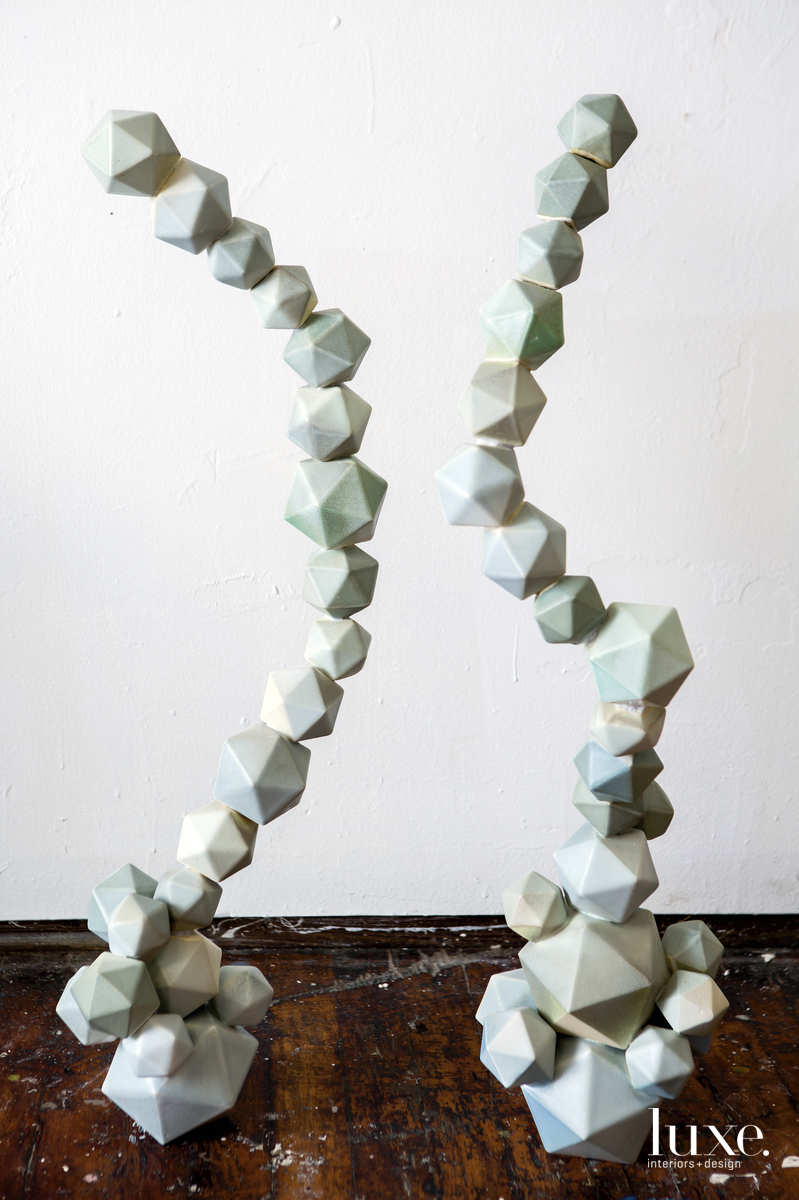
The artist makes poetic geometric sculptures, like those in her Blue Spiral Series, based on origami forms

The artist makes poetic geometric sculptures, like those in her Blue Spiral Series, based on origami forms

She made line drawings to plan an installation of 1,000 origami boats she folded over several months.

She made line drawings to plan an installation of 1,000 origami boats she folded over several months.
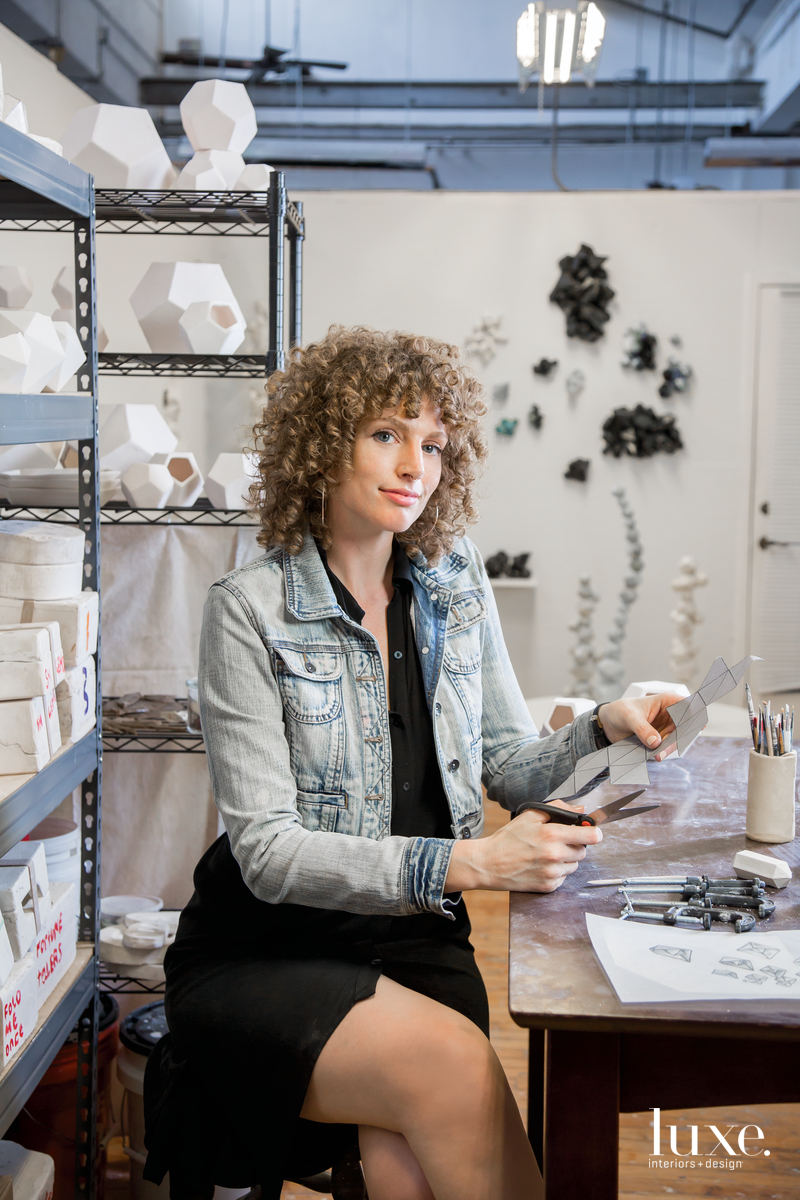
Shapiro prepares an origami prototype; after folding it, she'll use shellac for reinforcement before casting it into a plaster mold.

Shapiro prepares an origami prototype; after folding it, she'll use shellac for reinforcement before casting it into a plaster mold.
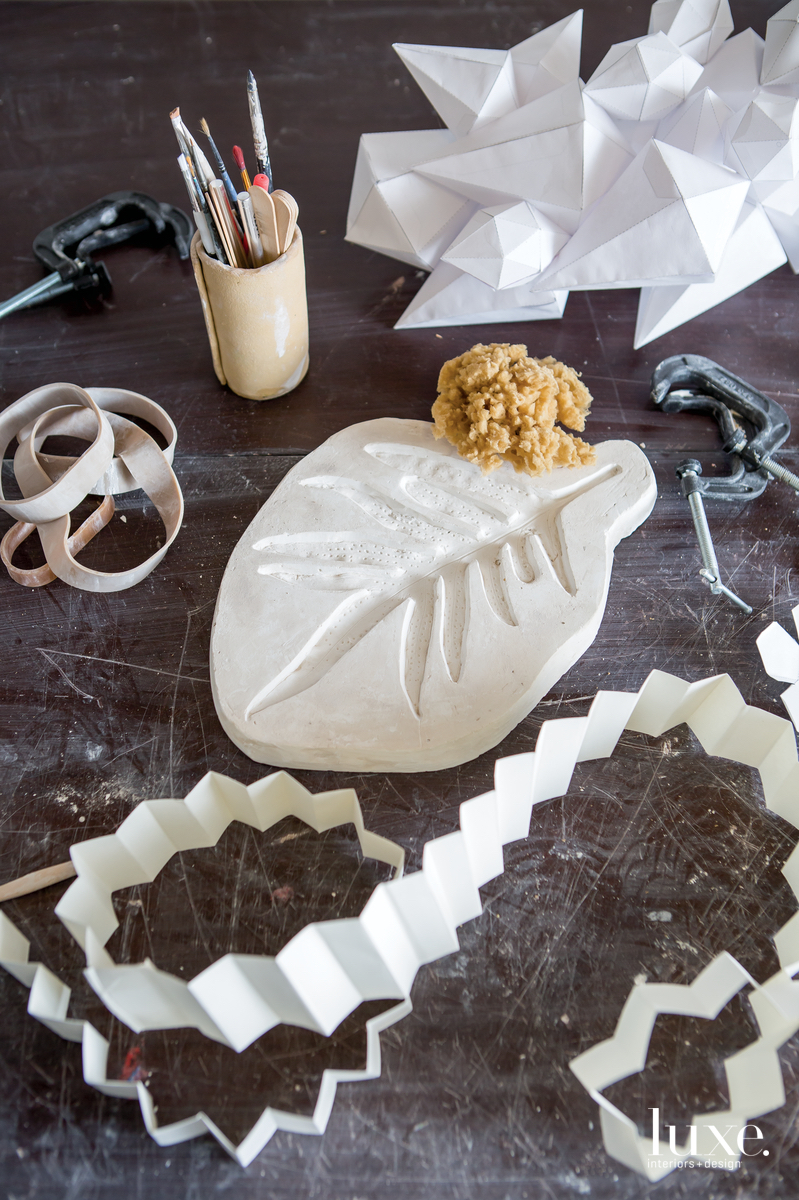
In addition to her polygon sculptures, Shapiro uses fallen leaves to create molds for casting site-specific installations that "create a dialogue about the delicate balance and fragility of our eco-systems," she says.

In addition to her polygon sculptures, Shapiro uses fallen leaves to create molds for casting site-specific installations that "create a dialogue about the delicate balance and fragility of our eco-systems," she says.
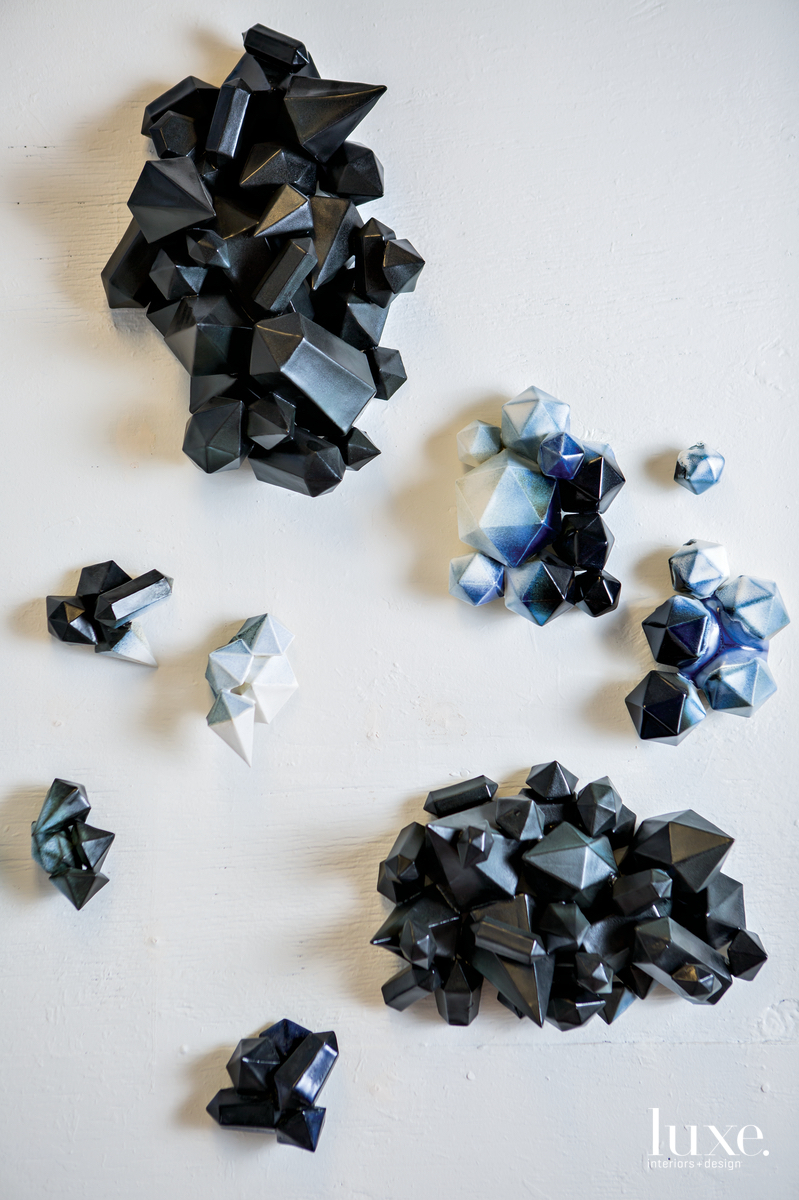
Her wall series, Polygonal Ice Wedges, is cast in black porcelain.

Her wall series, Polygonal Ice Wedges, is cast in black porcelain.
The molds Shapiro made in China now share space with more than 75 other molds at her studio at Bakehouse Art Complex in Miami, where she’s head of the ceramics studio. After casting multiple forms, from 2 to 7 inches in diameter each, she begins clustering them together, “like building blocks of nature, one on top of another, mimicking growth,” she explains. The results are transfixing. Her ensembles of luminous polygons, pale in color, feel geologic–less handcrafted than excavated. “The monochromatic color schemes enhance shadows and planar surface variations,” she notes. In her new wall series, Polygonal Ice Wedges, she’s exploring darker hues, and the spikey masses, cast from molds made of fractal paper diamond forms, are as black as obsidian.
Her work has been shown well beyond Florida in exhibitions from the L.A. Art Show to Art Basel in Switzerland. In August, she visited yet another continent as an artist in residence in Manaus, Brazil, where she gathered leaves and other flora native to the Amazon to bring back and mold to create site-specific tree-like clay forests. “The leaves won’t be fired, so ultimately, they’ll disintegrate the way they do in nature,” she says.
As for those origami shapes that were the genesis of her clay work–the boats–they were showcased at Arts Garage in Delray Beach, where Shapiro has also exhibited ceramics. These days, she’s working more with clay, but she hasn’t left paper folding behind. “I’ve embarked on a new project of 1,000 origami lotus blossoms,” she says, noting the medium’s advantage over slip casting when it comes to practicing mindfulness: “Paper folding is immediate. It can be done anywhere.”

